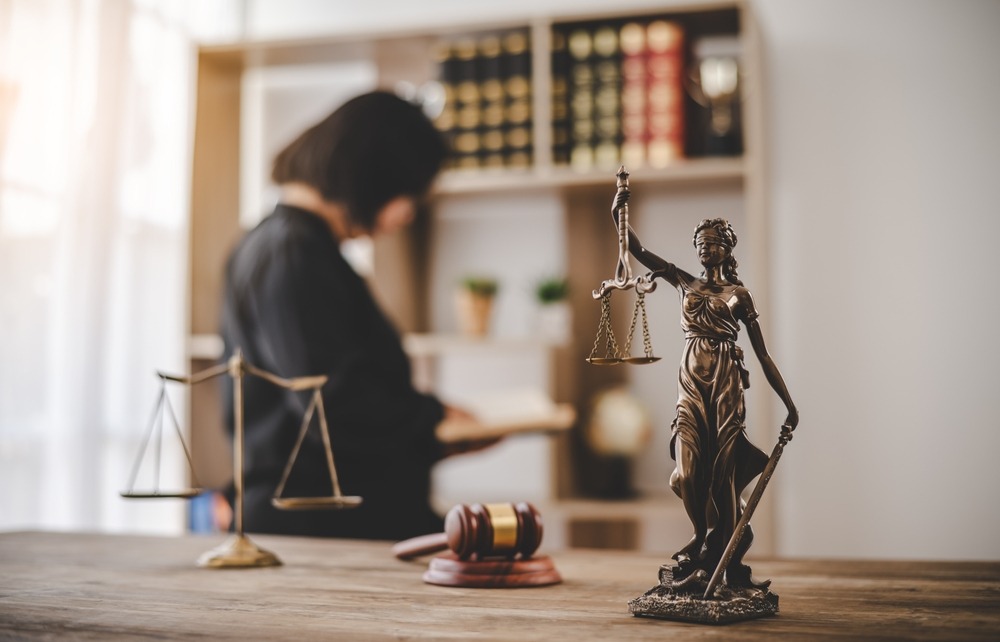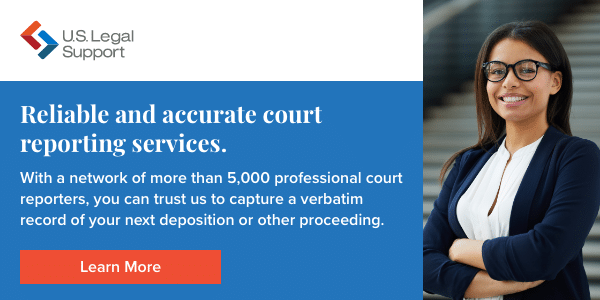The Evolution of Court Reporting

Court reporting is one of the oldest professions noted in history, even predating modern court systems by centuries. Today, modern court reporting is a profession that encompasses multiple functions, the heart of which includes: witnessing, capturing, and filing the official record of a legal proceeding.
Advances in technology have made it easier to function as the guardian of record, with some major advancements happening over the past few decades. Let’s take a deep dive into history and explore the evolution of court reporting.
The Origins of Court Reporting
Long before the establishment of U.S. state and federal courts, a legal proceeding was simply any formal event at which a law was applied or a decision declared by a ruling authority related to a crime or civil dispute.
It didn’t take long for early communities that established a series of rules and a system of authority to govern their members to recognize the need to keep records. Establishing a written record of their rulings and judgments served to ensure that punishments, recompense, and decisions were carried out, and to further develop a system of law.
Shorthand Systems: The Backbone of Early Court Reporting
Shorthand is a manner of abbreviating words and sounds in order to capture them in real time.
The earliest record of the use of court reporting with a shorthand system dates to 450 BC/BCE: a type of reinvented cuneiform used in China that was drafted in grass and mud before being copied into longer-lasting legal documents.
Ancient Greeks, and later, Romans, also used a system of symbols and abbreviations to capture legal and business dealings starting around 63 BC/BCE.1
There’s some evidence of shorthand among English speakers dating to about 1100 AD/CE, leading to published shorthand systems starting in the late 1500s. Shorthand used by British court reporters dates to the 1700s.
More recent written shorthand systems that have been used for legal recordkeeping can be found online for those who enjoy a pen-and-paper experience to take coded notes more quickly than with standard letter characters. Look up:
- Pitman
- Gregg
- Speedwriting
The Introduction of Mechanical Devices in Court Reporting
Shorthand machines have been available for nearly 150 years, close on the heels of the earliest typewriters.2 Through the years, court reporting machines and technology have moved in fits and starts, always with an eye toward greater accuracy and speed.
Key inventions and developments from the early years:
- 1877 – Miles Bartholomew invented the 10-key shorthand machine, used as late as 1937
- 1889 – George Kerr Anderson machine had multi-key depression and English characters
- 1911 – Ward Stone Ireland’s faster, lighter machine with full keyboard and steno paper
- 1933 – Stenograph Shorthand Machine with more paper and a longer ribbon
In the later 20th century, shorthand machines connected to backup audio and rudimentary computing power:
- 1963 – Stenograph Data Writer used a tape recorder and computer transcription
- 1987 – SmartWriter encoded machine notes on a DOS-based floppy disk
- 1992 – Stentura Stenograph Machine with LCD display of realtime transcribed text
The 21st century brings increased software and hardware advances including the integration of computer-aided transcription (CAT) and communication access realtime translation (CART):
- 2001 – élan Cybra was fully digital, without paper or ink
- 2005 – élan Mira A3 with audiosync technology, USB, serial, and wireless Bluetooth
- 2009 – The Diamante with TrueStroke, color panel, SD cards, mic and headset jacks, WiFi
- 2015 – The Luminex with more advanced software and sophisticated keystroke capture
Impact of Technology on Accuracy and Efficiency
Capturing speech in real time with accuracy has always been a challenge. Spoken English, for instance, has an output between 180 – 350 words per minute (WPM).3
A fast typist on a traditional QWERTY keyboard can capture about 80 – 120 WPM, and the custom key entry of today’s stenography machines captures 225 – 360 WPM (the lower end of this range is most common).
With that in mind, every stage of refining the steps and ease of use of a machine to capture verbatim speech has been essential to refining accurate record-making.
The Role of Court Reporters in Contemporary Legal Systems
There are two key roles at the heart of court reporting in today’s legal systems. These are:
- To capture and establish an impartial verbatim record, and
- To extend official status to a proceeding by virtue of their involvement.
While the first is self-explanatory, the second item above refers to the fact that the record created by a court reporter is the legal proof not just of what was said or decided, but that a legal event occurred. Without an official transcript, a deposition or courtroom proceeding cannot be a building block for further action, such as an appeal or trial evidence, or be used as a precedent in the ongoing development of the law.
Beyond capturing the record, court reporters today:
- Declare and establish both the start and end of the recorded proceeding
- Swear in witnesses as an officer of the court under the aegis of notary public status
- May provide transcription displayed in real time to support communication
- Are licensed at the state level and charged to follow the standards of their jurisdiction(s)
Functionally, all types of court reporters:
- Can interrupt the proceedings to clarify statements or actions for the record
- May utilize any methodology based on personal preference, client preference and jurisdictional regulation
- Are able to perform their duties in person or remotely by video or teleconference
U.S. Legal Support: Leading the Evolution of Court Reporting
While U.S. Legal Support may not be able to claim a history as old as the court reporting profession, we have been servicing firms for nearly 30 years, providing litigation support services including professional and accurate court reporting to law firms of all practice types and sizes.
Our nationwide network of 5,000+ professional court reporters is experienced, certified, and skilled in today’s standards of court reporting methodologies and practices.
U.S. Legal Support also offers transcription, interpreting and translation services, litigation consulting, record retrieval, and more.
Ready to talk about your legal support needs? Contact us today by phone, email, or website request form.
Sources:
- U.S. Legal Support. Celebrating Stenography: Where It Started and How It’s Changed Overtime. https://www.uslegalsupport.com/blog/celebrating-stenography-where-it-started-and-how-its-changed-over-time/
- Stenograph LLC. The History of Writing Machines. https://www.stenograph.com/history-writers
- Stanley Sakai. Stan’s Quick and Dirty: How Stenography Works. https://youtu.be/62l64Acfidc

Editoral Policy
Content published on the U.S. Legal Support blog is reviewed by professionals in the legal and litigation support services field to help ensure accurate information. The information provided in this blog is for informational purposes only and should not be construed as legal advice for attorneys or clients.


